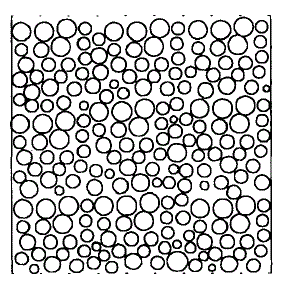Properties of Cotton Fiber:
Cotton is a soft,
fluffy staple fiber
that grows in a boll,
or protective case, around the seeds of cotton plants of the genus Gossypium
in the family of Malvaceae.
The fibre is almost pure
cellulose. Under natural conditions, the cotton bolls will
tend to increase the dispersal of the seeds
. The following properties of cotton fibers are
considered for cotton spinning :-
1. Fiber length:
The average length of spinnable
fibre is called staple length. Staple length is one of the most important fibre
characteristics. The quality, count, strength etc. depend on the staple length
of fibre.
The following length groupings are
currently used in stating the trade staple:
- Average : (25-35) mm
- Short length: 1.010" or less.
- Medium length : 1.03" to 1.13"
- Long length : 1.16" to 1.6"
- Extra-long length : 1.6" to above
2. Fiber fineness:
Fineness is one of the most
important parameter determining the yarn quality characteristics. Fibre
fineness influences the number of fibres in the cross section of yarn.
Thirty fibers are needed at the minimum in the yarn cross section but there are usually over 100. One hundred is approximately the lower limit for almost all new spinning process. This indicates that fineness will become more important.
Fiber influence primarily:
- Spgn limit,
- Yarn strength,
- Yarn evenness,
- Drape of the fabric product,
- Handle,
- Luster,
- Yarn fullness,
- Productivity.
Evenness is measured in Micronaire
value (MIC).
Rating of MIC value –
MIC value ----------------->Fineness
Rating of MIC value –
MIC value ----------------->Fineness
- Up to 3.1 ------------very fine
- 3.1 to 3.9 ------------fine
- 4.0 to 4.9 ------------medium
- 5.0 to 5.9 ------------slightly coarse
- 5.9 to above ---------coarse.
3. Maturity:
The maturity of cotton is defined in
terms of the development of cell wall. A fully mature fiber has a well-developed
thick cell wall. On the other hand, an immature fibre has a very thin cell. The
fibre is to be considered as mature fibre when the cell wall of the moisture-swollen
fibre represents 50-80% of the round cross section, as immature when it
represents 30-45% and as dead when it represents less than 25%.
Cotton
fiber structure
|
Immature fiber leads to:
- Nepping,
- Loss of yarn strength,
- Varying dye ability,
- High proportion of short fibres,
- Processing difficulties mainly at the card
4. Fiber Strength:
Toughness of fibre has a direct effect on yarn & fabric strength.
Fibre strength ↑→ Yarn & Fabric strength.↑
Very weak cottons tend to rupture during processing both in blow room & carding, creating short fibres & consequently deteriorate yarn strength & uniformity.
The following scale of value is used:
- Below to 70% → weak,
- 70% to 74% → fairly strong,
- 75% to 80% → medium strong,
- 81% to 86% → strong,
- 87% to 92% → very strong,
- 93% & above → excellent.
5. Fiber cleanness:
In addition to usable fibers, cotton stock contains foreign matter or trash or foreign material of various kinds: -
Vegetable matter:
In addition to usable fibers, cotton stock contains foreign matter or trash or foreign material of various kinds: -
Vegetable matter:
- Husk portions
- Seed fragments
- Stem fragments
- Wood fragments.
Mineral material:
- Earth
- Sand, dust, coal.
Others:
- Metal fragments
- Cloth fragments
- Packing materials.
Foreign matter causes:
- Drafting disturbance,
- Yarn breakage,
- Filling up of card clothing,
- Contaminated yarn.
Accepted the range of foreign
matters to the Cotton Bale –
- Up to 1.2% → very clean
- 1.2% to 2.0% → clean
- 2.0% to 4.0% → medium
- 4.0% to 7.0% → dirty
- 7.0% & above → very dirty.






